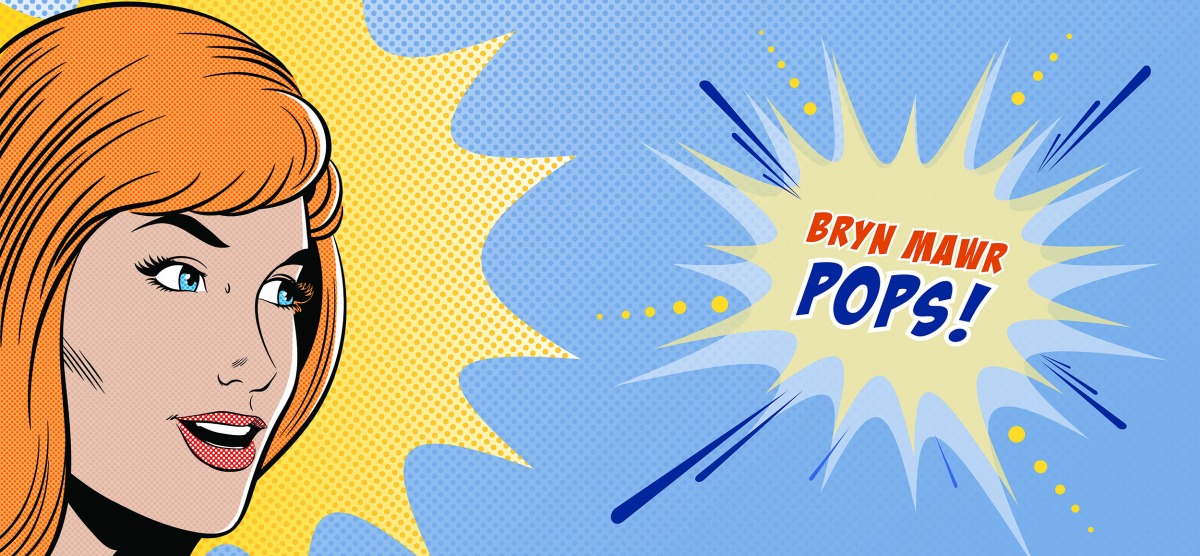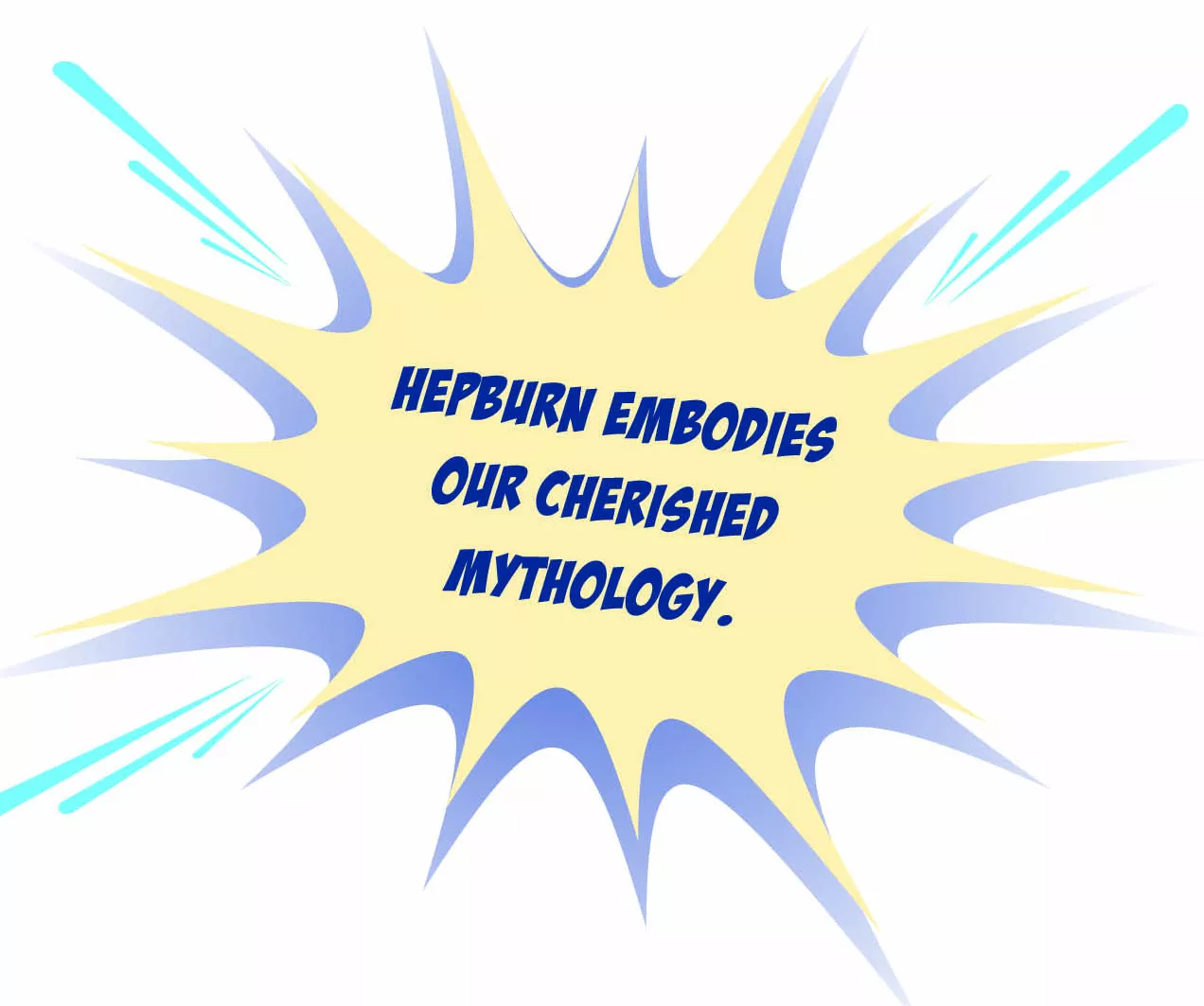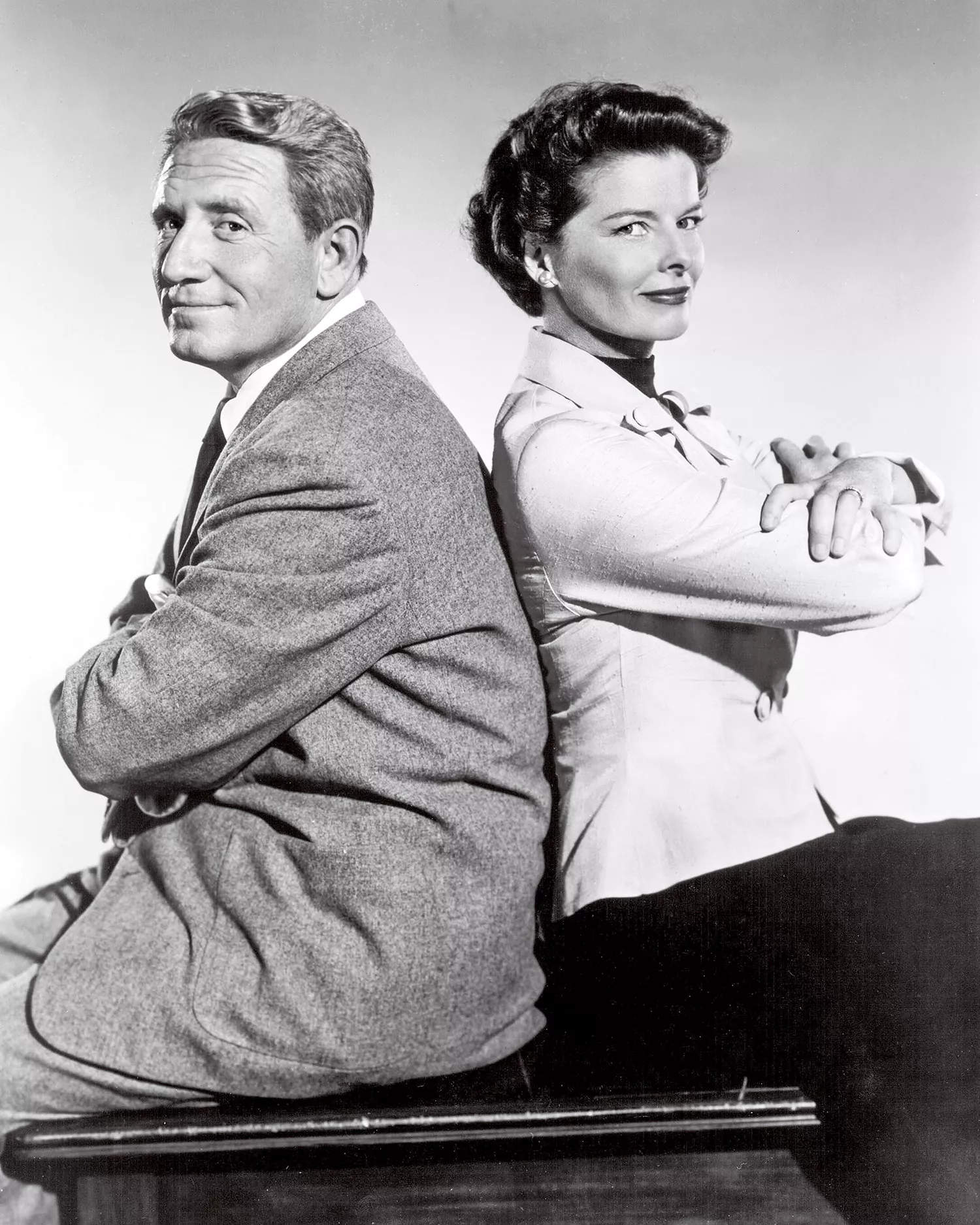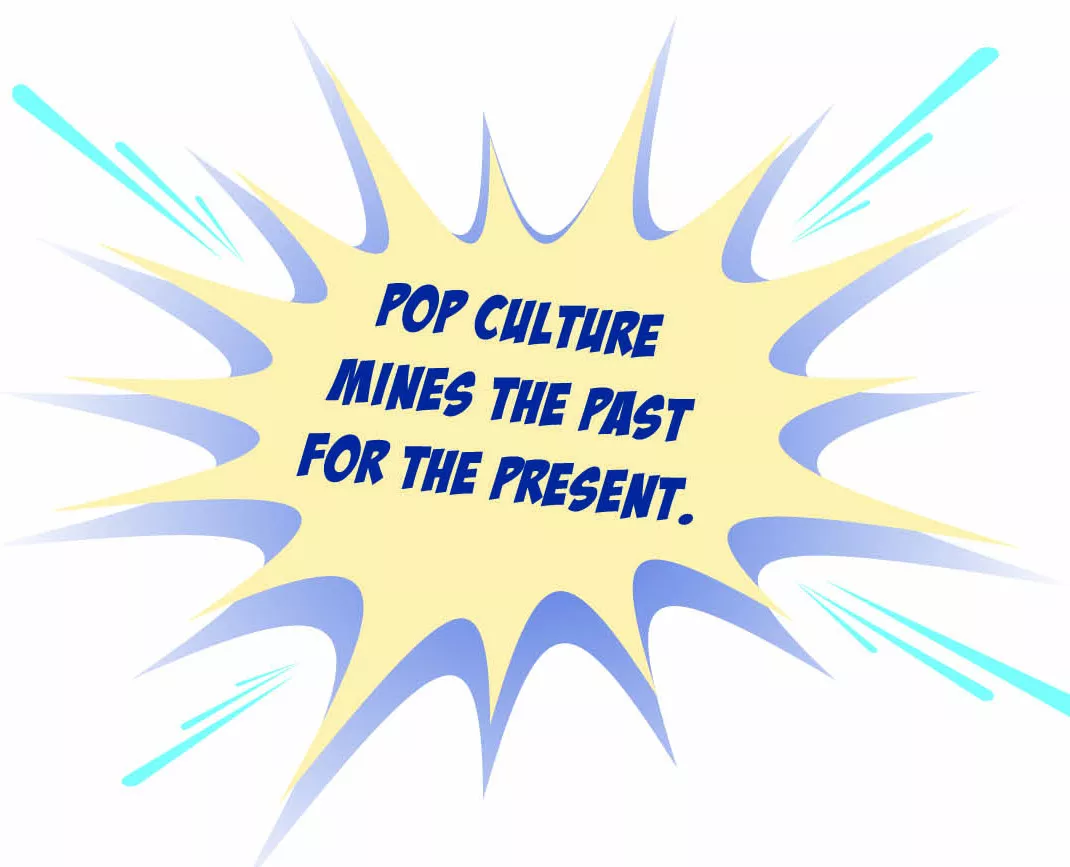
Fact, Meet Fiction
A lighthearted analysis of Bryn Mawr in popular culture—what resonates, what doesn’t, and why it really does matter.
What do Betty Draper, Liz Lemon, and Midge Maisel (the protagonist of a new series produced by Amazon) all have in common? They all went to Bryn Mawr. Well, not really, because of course they’re fictional. They got their degrees not from four years of academic sweat but from the keystrokes of Hollywood writers, landing them in a pop culture pantheon that includes, among others, Katharine Hepburn’s character in Adam’s Rib, Bart Simpson’s fourth-grade teacher, and a covert operations specialist who helps G.I. Joe save the planet from the archvillain Cobra.
Perhaps because these allusions are relatively rare, they feel like little treasures when we stumble upon them—with our initial jolts of pleasure and excitement followed inevitably by a vigorous examination of their authenticity. Here, by way of sharing the delights of discovery, are some of the ways Bryn Mawr has been presented to the world through popular culture.
Mimesis and Myth-Making
But first, why is it so absurdly exciting when Bryn Mawr gets a nod on the big or small screen? “That’s mimesis,” says Amy Villarejo ’85, a professor of performing and media arts at Cornell. “We like to see ourselves reflected back to us—that’s how we know who we are. It’s the basis of psychoanalytic theory and of sociological theories of recognition. It goes to fundamental aspects of human recognition.”
For most of us, Villarejo continues, Bryn Mawr is a “significant part of who we are or were, so we are measuring those images for verisimilitude, for recognition, for something of our own experience. There’s critical pleasure, too, in watching as a Bryn Mawr person, with a kind of cultural authority.”
Hence our visceral thrill of ownership at the shots of Rhoads beach during the opening flashback sequence of The Marvelous Mrs. Maisel, while the voiceover of the just-married Midge fondly recalls her college years. Hence, too, our keen interest in the details of the show’s richly construed version of Bryn Mawr in the 1950s. Did the students really wear gray blazers to dinner in Rhoads? Did they find butter molded with BMC monograms waiting for them on tables set with white linen? (For the record, the gray blazers were popular, but not a uniform; linen tablecloths were used, but not every day; and the butter molds are popular lore, but not documented.)
By the same token, the investment of our own identity in how Bryn Mawr is portrayed to the world explains our bristle of indignation when the writers get it wrong—as when Mad Men’s Betty Draper refers to the sorority that never existed.
Bound up with mimesis, there is some myth-making, too—myth in the sense of the stories that reflect, inform, and inspire our cultural identity. Mimesis is most satisfying when what it reflects back is the best possible version of ourselves. What we want to see are the ideals of the institution embodied and projected into the world. In other words, we want Kate.
Iconic Kate
Given her iconic status within both American film history and the history of the College, Katharine Hepburn ’28 is in some sense the standard against which we measure any on-screen reference to Bryn Mawr. Both in the characters she played, from Tracy Lord in The Philadelphia Story to Eleanor of Aquitaine in The Lion in Winter, and in her life in the world, she embodied the qualities we value most in what Villarejo calls our “cherished mythology” of Bryn Mawr—not only intelligence but also independence, passion, creativity, quirkiness, and often an explicit embrace of female empowerment.
Among Hepburn’s many strong female leads, Amanda Bonner, the attorney who takes on her husband in the classic 1949 battle-of-the-sexes comedy Adam’s Rib, gives us the complete package—a trailblazing professional, dripping with confidence and wit, who also went to Bryn Mawr. The College reference is so quick you might miss it, but significantly it coincides with Amanda’s explicit articulation of the feminist values we associate with the institution. Careening along the highway at the wheel of a convertible, she lectures Spencer Tracy on society’s double standard in its treatment of men and women. When he suggests that “mostly females get advantages,” she insists, “We don’t want advantages and we don’t want prejudices.”
“Oh, now you’re giving me the Bryn Mawr accent,” he shoots back with an eye-roll.
Amanda’s resonance with “our cherished mythology” imbues her physical presence as well as her rhetoric. Taking a breakfast tray from her housekeeper in the film’s opening moments, she turns and deftly kicks the bedroom door shut with her foot, then practically dances across the floor with it toward her sleeping husband. Before she has even read the newspaper headline that sets the plot in motion or uttered a word about women in society, we see that she moves through her world with balance, grace, confidence, and insouciance. “There is so much in that gesture,” says Villarejo, “that embodies what the character was about and what Katharine Hepburn herself was about.”
Bryn Mawr gets another nod later in the film, when Amanda parades a string of witnesses to make a point about the range and power of women’s abilities. To show physical prowess, she calls an acrobat who does handsprings across the courtroom and lifts Spencer Tracy off the floor with one hand; for success in the blue-collar workplace, a forewoman who oversees hundreds of factory workers including her own husband. For sheer brains, Amanda calls Dr. Margaret Brody, a chemist. Asked to tell the court what degrees she holds, Dr. Brody replies, “Well let’s see…A.B., B.S., Bryn Mawr; M.A., M.D., Ph.D., Columbia. Do you want the European ones, too?"
Braininess like Dr. Brody’s is one of two basic qualities that filmmakers use Bryn Mawr to signify. The other is privilege. In Some Like It Hot, Marilyn Monroe invokes Bryn Mawr, complete with a fake hoity-toity accent, to convince Tony Curtis’s character (disguised as a millionaire) that she and her band-mates are “society girls.” For us as alums, braininess is the sine qua non of our Bryn Mawr identity. Social privilege, although not the defining and constraining force it once was, has the ring of historical truth to it. But when the Bryn Mawr label functions only to signify that a woman is smart and or privileged, the result is either a knowing, successful caricature—as it is for Dr. Brody and for Monroe’s Sugar Kane Kowalczyk—or tone deafness. That’s why Betty Draper disappoints.
Betty and Jane and Midge
Perhaps no fictional Bryn Mawr alumna has been subjected to more scrutiny than Don Draper’s wife on Mad Men, the AMC series that ran from 2007 to 2015. The likelihood of Betty, a privileged, deeply conventional housewife, being a Mawrter has been vigorously debated by alums on social media as well as by television critics. In The Atlantic, Benjamin Schwarz called Betty’s Bryn Mawr degree the show’s “most egregious stumble in verisimilitude.” Most alums would agree that the more likely character to have a lantern on her bookshelf is department store executive Rachel Menken, played by real-life alum Maggie Siff ’96.
Betty is bored, brittle, and so constrained by convention that she lives in a state of barely contained rage and frustration. She’s also smart, from the Main Line, and painfully aware of her untapped potential. “We all have skills we don’t use,” she says to Henry, the man who will replace Don as her husband. “I was an anthropology major at Bryn Mawr. Can you believe that?”
It’s not that it’s impossible that an individual like Betty could have gone to Bryn Mawr in the 1950s. It’s that for us as alums, Betty makes for a disappointing mimetic experience. She doesn’t reflect what we love most about Bryn Mawr, namely the insistence that convention not hold us back. Plus that sorority thing was just plain sloppy.
Jane Hollander, in the regrettably short-lived Amazon drama Good Girls Revolt, comes closer to our expectations. Set 10 years later than Mad Men, the series tells a fictionalized version of the story behind the nation’s first anti-discrimination complaint against an employer. (The real-life account of the women who sued Newsweek in 1970 is chronicled by Lynn Povich in her 2012 book of the same title.)
Jane oozes smarts and professionalism in her job as a researcher for a magazine where women aren’t allowed to be reporters. But while Jane’s brains and competence resonate, she is practically the last female in the newsroom to come around to the women’s efforts to fight discrimination. When she hisses, “I am not a career girl,” we think the writers made a mistake. Jane comes around, though—a few episodes later, we see her shouting, “I’m a career girl!” into the New York night.
In Midge Maisel, the protagonist of the new Amazon series The Marvelous Mrs. Maisel, we find plenty to love, mimetically speaking. A privileged housewife who, abandoned by her husband, becomes a stand-up comic in 1950s New York City? Sure, why not? We love that Midge is funny and strong as well as smart, that she dives into a traditionally male professional world, and that she makes lemonade of the lemons her husband handed her when he walked out the door. In Villarejo’s words, Midge resonates with “all of the things we value in our own myth-making, in the Katharine Hepburn model."
It’s hard not to notice that Betty, Jane, and Midge, while created within the past 10 years, all live in the distant past, decades from the world inhabited by the far more diverse real women who attend Bryn Mawr today. For these characters, the Bryn Mawr affiliation bespeaks intellectual seriousness at a time when a Seven Sisters school represented the pinnacle of education for women. But it’s a logic that by extension, notes Villarejo, places “women’s colleges and their capacity to signify the best, most rigorous education for women, in the past.” We get a hint of this logic in Something’s Gotta Give, the 2003 romantic comedy starring Diane Keaton. It’s set in the present, but Keaton’s character, a successful playwright, is in midlife, so her college years are long behind her. Her ex-husband refers to her as “a Bryn Mawr girl” in a conversation with his new fiancée, a much younger physician who went to Penn.
This tendency to associate Bryn Mawr’s academic excellence with the past might seem discouraging. But Villarejo chooses optimism here. “Popular culture mines the past for the present,” she stresses. “Young women who are watching Mrs. Maisel in 2017 are still seeing an association between the institution and female independence, and carrying that association into the current world.”
Back to the Future
Bryn Mawr still pops up, sometimes in surprising places, in settings that postdate the Ivies’ admitting women. Edna Krabappel, Bart Simpson’s acerbic, slightly transgressive (she smokes and has an affair with the principal) teacher reveals to her students that she got her master’s from Bryn Mawr.
But, she warns them, life isn’t fair: despite your degree, “you might end up a glorified babysitter to a bunch of dead-eyed fourth graders.” (Also on The Simpsons is the not-to-be missed dream sequence in which Lisa, Bart’s brainy, feminist little sister, is visited by the Seven Sisters in the form of Greek goddesses wearing college T-shirts.)
The long-running ABC comedy 30 Rock also made references to Bryn Mawr, suggesting to some that Liz Lemon, the comedy producer played by Tina Fey, was a Mawrter. The backstory is admittedly thin: during the first season, Alec Baldwin’s character Jack Donaghy admonishes her, “Lemon, this is not open mic night at the Bryn Mawr student union!” But many Mawrters have embraced Liz—a neurotic, quirky, driven professional in a male-dominated work world—as one of our own.
Perhaps the most unexpected Bryn Mawr allusion comes from the Marvel comic world of G.I. Joe.
Lady Jaye, the G.I. Joe team’s covert operations specialist, has a long history in comic books, television cartoons, and most recently, the 2013 movie G.I. Joe: Retaliation. She is also surely the only alum with her own action figure, her Bryn Mawr degree listed on the doll’s clip-and-save “Command File.” Her facility with languages (critical to her undercover success) conveys the requisite braininess, while her skills as a pilot and with a crossbow prove that Mawrters really can do anything, up to and including saving the planet.
Ultimately, of course, pop culture references do more than reflect our identity and ideals back to us as Bryn Mawr insiders. They also telegraph impressions of Bryn Mawr to the world. Beyond whatever resonance we experience on a personal level, that’s why we care whether the writers get it right or wrong. In Villarejo’s words, “It matters that we have a public image that is so incredibly positive about women.”
In our ongoing mimetic treasure hunt, hopefully we’ll stumble on some new pop-culture jewels that reflect the College’s diversity, vitality, and powerful relevance in today’s world. In the meantime, let’s wish Midge and Mrs. Maisel many seasons of success—and maybe go buy the latest Lady Jaye action figure.
Further Reading
14 movies you didn't realize were filmed in (and around) Philadelphia
— Two of these were shot in part at Bryn Mawr. From PhillyVoice, Oct. 18, 2017.
Published on: 09/15/2017


